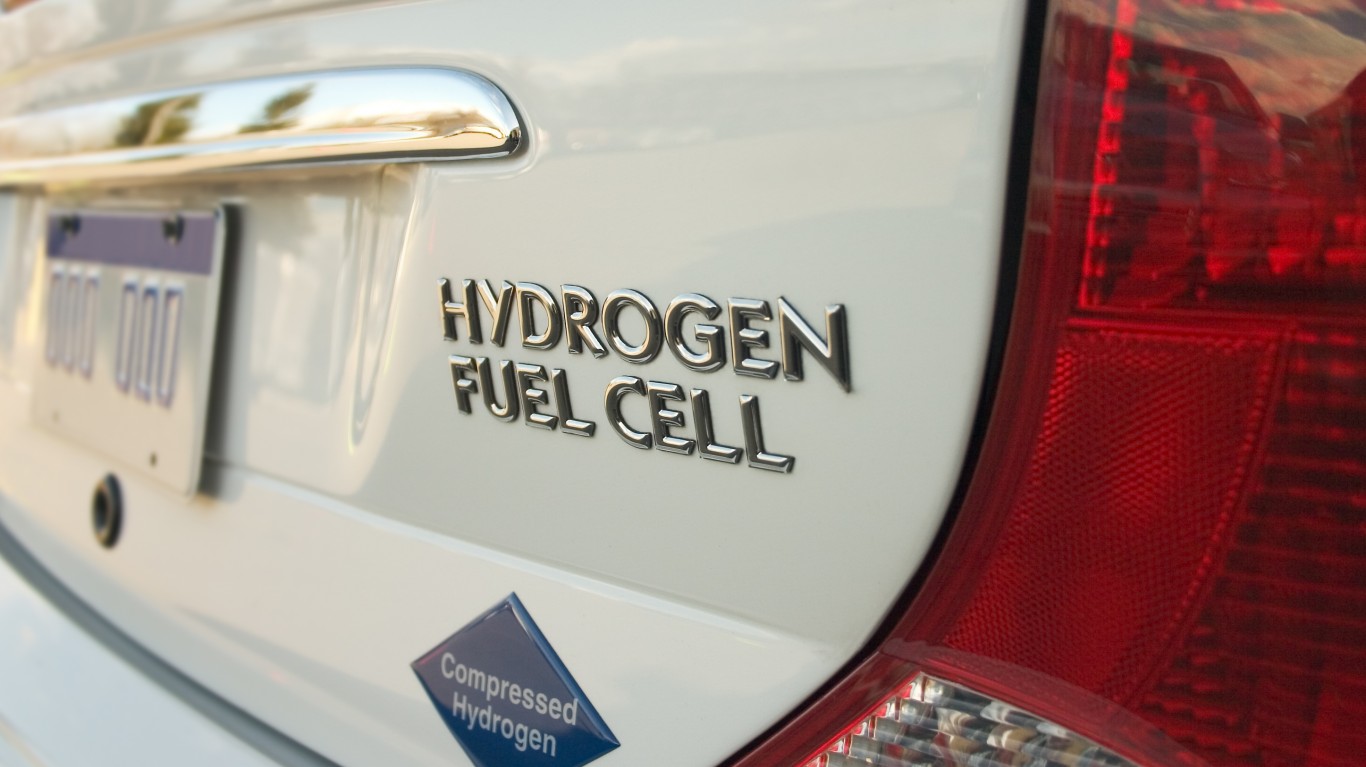
When one of the world’s largest oil and gas producers commits to investments of more than $11 billion to develop hydrogen fuel, it is probably time to pay attention. Norway’s state-controlled oil and gas giant, Equinor, has made that move.
The company is betting that it can produce so-called blue hydrogen, made from natural gas, more cleanly than any competitor, according to a report from Bloomberg. Equinor is not aiming at the transportation market but at huge industries like steel and cement that emit millions of tons of carbon dioxide. Along with partners and government funding, Equinor is planning to invest some $11 billion in blue hydrogen by 2035.
In the transportation sector, automakers Toyota, Honda and Hyundai already are producing passenger cars that use hydrogen for fuel, and Daimler, Toyota and Hyundai are developing trucks that use the fuel. However, there are a number of obstacles to overcome. First, obviously, is convenience. Outside of California, hydrogen refueling stations are practically nonexistent, and they cost about $2 million each to build. A battery charger costs about $50,000 to install, and a gas station’s tanks and other infrastructure cost around $400,000.
RBN Energy has taken a comprehensive look at hydrogen as a transportation fuel and concluded: “Either the cost of hydrocarbon fuels would have to rise to much higher levels, through either market or government action, or hydrogen costs will need to be reduced considerably to make them competitive.”
Where does that leave investors? According to RBN Energy: “For savvy investors, hydrogen presents interesting opportunities, but for hydrogen to be ultimately competitive it may require consumers to accept higher prices relative to current petroleum-based fuels.”
Just looking at the returns, both in dollars and positive impact on the environment, going after stationary targets like steel and cement plants may make more sense. We have looked at a number of hydrogen producers, fuel cell makers and truck makers. The five best performers include two fuel cell companies and three hydrogen producers.
Fuel Cell Energy
Fuel Cell Energy Inc. (NASDAQ: FCEL) is a full-service designer, manufacturer and servicer of stationary fuel cell power plants. In addition to its natural-gas-fueled products, the company also has a hydrogen fuel cell power plant that produces additional hydrogen from the natural gas plants that can be used or sold for transportation or industrial use.
Fuel Cell Energy stock has added about 200% to its share price over the past 12 months. The stock price soared in the first few weeks of this year, when retail investors couldn’t get enough of it. Since then, the shares are down more than 75% and no analyst has a Buy or Strong Buy rating on the stock.
With a median price target of $7.00 and a current price of around $6.60, the upside potential is 5.7%, and the company is not expected to post a profit in 2021, 2022, or 2023. Investors will sink or soar on share price movements.
Plug Power
Hydrogen fuel cell maker Plug Power Inc. (NASDAQ: PLUG) makes turnkey solutions for both the mobility and stationary markets focused on proton exchange membrane (PEM) fuel cells. The company touts its mobility products for everything from drones to delivery vans and long-haul trucking. Its stationary products include high- and low-power generators designed to provide backup power.
Over the past 12 months, the shares are up more than 47%, after spiking in late January, again amid a blizzard of retail buying. Since then, the shares are down about 64%. Plug Power gets Buy or Strong Buy ratings from 17 of 25 analysts and Hold ratings from another six.
The stock’s current price of around $27.20 implies an upside of 32%. Like Fuel Cell Energy, the company is not expected to post a profit in 2021, 2022 or 2023 and is strictly a growth play.
Linde
U.K.-based Linde PLC (NYSE: LIN) manufactures a variety of industrial gases, including oxygen, acetylene and hydrogen. The company operates the world’s largest green hydrogen plant, which uses wind power to create hydrogen. Linde also has tested use of hydrogen fuel to reduce steel plant emissions.
Linde’s share price has risen by more than 26% in the past year, without any of the huge spikes we saw with Fuel Cell Energy and Plug Power. Analysts are bullish on the stock, with 12 of 15 putting Buy or Strong Buy ratings on the shares. The other three have Hold ratings on the stock.
With a median price target of $350.00 and a current price near $297.90, the upside potential is about 17.5%. Linde’s stock trades at 28.5 times expected 2021 earnings per share (EPS), 25.9 times estimated 2022 EPS and 23.3 times estimated 2023 EPS. The company also pays an annual dividend of $4.24, for a yield of 1.42%.
DuPont
DuPont de Nemours Inc. (NYSE: DD) does not produce hydrogen directly. The company got into the hydrogen fuel cell business in 2011. Like Plug Power, DuPont supplies PEM products (as does Ballard Power, another fuel cell company that didn’t make this list).
Over the past 12 months, DuPont has added about 25% to its share price, all of it prior to mid-January. Since then the shares have dropped more than 17%. Analysts are bullish on the stock, with 15 of 21 giving Buy or Strong Buy ratings to the shares. None of the surveyed analysts have a Sell rating on DuPont.
The stock trades at around $70.60, implying an upside potential of 33%, based on a median price target of $94.00. Shares trade at 16.4 times expected 2021 EPS, 14.3 times estimated 2022 EPS and 12.8 times estimated 2023 EPS. DuPont pays an annual dividend of $1.20, for a yield of 1.7%.
Cummins
Indiana-based Cummins Inc. (NYSE: CMI) designs, manufactures and services diesel and natural gas engines and related components. In 2019, Cummins acquired fuel cell systems maker Hydrogenics. Last November, the company said it would work with Navistar to develop a hydrogen-powered semi truck. In April, Cummins fuel cells (based on PEM technology) powered the first flight of a hydrogen-powered aircraft.
Cummins’s share price has risen by nearly 10% over the past 12 months. Since peaking in mid-March, however, shares are down nearly 15%. Analysts have adopted a wait-and-see attitude toward the company, with 15 of 25 putting a Hold rating on the stock. The other 10 rate the shares a Buy or Strong Buy.
At a price of about $237.00, the implied upside based on a median price target of $280.00 is 18%. Cummins stock trades at 14.5 times expected 2021 EPS, 12.3 times estimated 2022 EPS and 11.5 times estimated 2023 earnings. Cummins pays an annual dividend of $5.80, for a yield of 2.47%.
Cash Back Credit Cards Have Never Been This Good
Credit card companies are at war, handing out free rewards and benefits to win the best customers. A good cash back card can be worth thousands of dollars a year in free money, not to mention other perks like travel, insurance, and access to fancy lounges. See our top picks for the best credit cards today. You won’t want to miss some of these offers.
Flywheel Publishing has partnered with CardRatings for our coverage of credit card products. Flywheel Publishing and CardRatings may receive a commission from card issuers.
Thank you for reading! Have some feedback for us?
Contact the 24/7 Wall St. editorial team.
 24/7 Wall St.
24/7 Wall St. 24/7 Wall St.
24/7 Wall St.


